Now that we've officially seen the HoloLens 2 and Microsoft has shown off the improvements and new superpowers of the augmented reality headset, what about the specs?
Luckily, Microsoft has laid bare the full specifications for its next-generation headset. Let's dive in and see what $3,500 buys.
Display
- Optics: See-through holographic lenses (waveguides)
- Resolution: 2k 3:2 light engines
- Holographic Density: >2.5k radiants (light points per radian)
- Eye-based Rendering: Display optimization for 3D eye position
The display is arguably the most important aspect of any augmented reality headset. One of the biggest criticisms of the original HoloLens was its limited field of view of around 35 degrees. For the sequel, Microsoft has managed to more than double the field of view while maintaining image fidelity at 47 pixels per degree of sight.
During the presentation at MWC, Alex Kipman, Microsoft technical fellow and head honcho of HoloLens, noted that the HoloLens 2 employs a microelectromechanical (MEMS) laser scanner to achieve the wider field of view, a fact that was foreshadowed by a patent application published by the US Patent and Trademark Office in last June and filed by Microsoft in Dec. 2016.
Sensors & Audio
- Depth: Azure Kinect sensor (Depth camera: 1MP Time-of-flight; RGB camera: 12MP CMOS sensor rolling shutter)
- IMU: Accelerometer, gyroscope, magnetometer
- Camera: 8MP stills, 1080p 30fps video
- Microphone Array: 5 channels
- Speakers: Built-in, spatial audio
The secret sauce behind the improved user experience for the HoloLens 2 is the Azure Kinect sensor, which is also available as a standalone device. According to the specs for the sensor, the Azure Kinect includes a 1MP time-of-flight sensor and a 12MP CMOS sensor with rolling shutter for the RGB camera.
The headset also includes sensors that one would find in modern smartphones, including a camera for capturing 8MP still images and 1080p 30fps video, as well as an inertial measurement unit that includes an accelerometer, gyroscope, and magnetometer for determining the device's orientation and movement within an environment.
On the audio side, the HoloLens 2 includes a five-channel microphone array for voice input and recording, and built-in speakers for spatial audio.
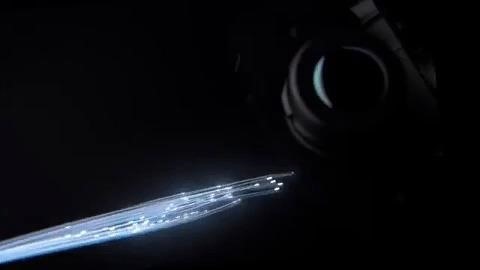
Human Understanding
- Hand Tracking: Two-handed fully articulated model, direct manipulation
- Eye Tracking: Real-time tracking
- Voice: Command and control on-device, Natural Language with internet connectivity
With the improved depth sensor, the HoloLens 2 is able to move beyond preset hand gestures and track a user's hand movements with greater accuracy. This is what makes it possible for users interact directly with 3D content with more natural gestures. Eye tracking adds another layer of user input, enabling users to scroll through web pages with their eyes and authenticate their ID using Windows Hello.
Environmental Understanding
- 6DoF Tracking:World-scale positional tracking
- Spatial Mapping:Real-time environment mesh
- Mixed Reality Capture:Mixed hologram and physical environment photos and videos
Azure Kinect also plays a role in improved tracking and real-time mesh construction. We've seen the improved speed and range of the sensor demonstrated before, the improvements here aren't all that shocking.
Compute & Connectivity
- SoC (system on a chip): Qualcomm Snapdragon 850 Compute Platform
- HPU: 2nd Generation Custom-built Holographic Processing Unit
- Wi-Fi: 802.11ac 2x2
- Bluetooth: 5.0
- USB: USB Type-C
The Snapdragon 850 processor is the same found in Windows 10 laptops and boasts a CPU clock speed of up to 2.96 gHz. Microsoft has also outfitted the HoloLens 2 with an improved Holographic Processing Unit. The included Wi-Fi, Bluetooth 5.0, and USB-C are standard, but it's a shame that the precision location functionality of Bluetooth 5.1 won't make it into this device.

Power
- Battery Life: 2 to 3 hours of active use
- Charging: USB Power Delivery (fast charging)
- Thermals: Passively cooled
For a device that is aimed at enterprise users, battery life of no more than three hours under active use might be a bit of a concern. However, the fast charging capability works to offset that weakness. In terms of thermals, Microsoft designed a new vapor chamber for passive cooling.
Wearable Fit
- Size: Single size with adjustment dial
- Prescription Lens: Fits over standard eyeglasses
Microsoft made a big deal out of the improvements to comfort during the MWC presentation. Constructed of a lightweight carbon fiber, the device is more balanced to accommodate user movement. The company also scanned the heads of a wide range of human subjects so that the design could account for a comfortable fit for just about anyone.
While the Magic Leap One comes in two versions to accommodate different head sizes, the HoloLens 2 comes in a single size with an adjustment dial. There's no special fitting required for the new HoloLens, either. Also, unlike Magic Leap One, HoloLens 2 fits over glasses, so there's no need to worry about buying a prescription insert.

Software
- Windows Holographic OS
- Edge
- Remote Assist
- Layout
- Guides
- 3D Viewer
- OneDrive for Business
As one would expect, the HoloLens 2 runs on a version of Windows designed for the headset, with Edge serving as the web browser and OneDrive for Business standing in for cloud storage and collaboration. The device will also include Microsoft's existing HoloLens apps, namely the 3D viewer and a pair of enterprise apps, Remote Assist and Layout, along with the addition of a new app called Guides for covering training and workflow guidance.
Of course, as those who follow the tech world know, specs don't mean everything. The integration of software and hardware determines whether the device can take advantage of those specs. By all accounts, though, it looks like the HoloLens 2 is up to the task.
Just updated your iPhone? You'll find new emoji, enhanced security, podcast transcripts, Apple Cash virtual numbers, and other useful features. There are even new additions hidden within Safari. Find out what's new and changed on your iPhone with the iOS 17.4 update.




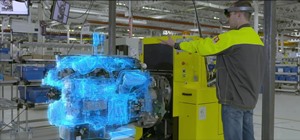


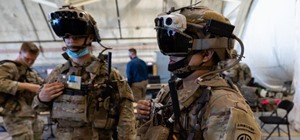





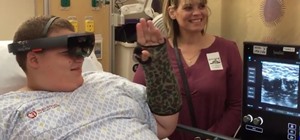
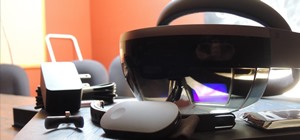



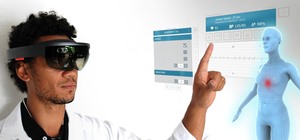




Be the First to Comment
Share Your Thoughts